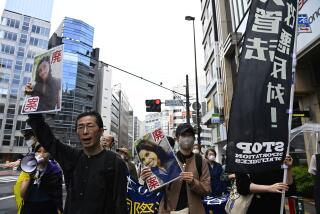Short of Labor, Japan Turns to Women, Aged
- Share via
TOKYO — Japanese planners, looking to fill a widening labor gap without admitting many foreign workers, are focusing on two alternatives--women and the elderly.
Besides improving productivity, their approach might ease a labor shortage that could eventually dampen economic growth. But some economists say the plan will falter in the face of harsh demographic reality.
“In the short term, perhaps, they can solve the problem by such means as mobilizing women and the elderly, but after the late 1990s, such makeshift solutions probably won’t suffice,” said Nobuyuki Ueda, economist at Long-Term Credit Bank of Japan. “After the year 2000, a structural labor shortage will emerge.”
Behind the immediate crunch is a long-running economic boom, which has boosted demand for workers. Unemployment is 2.1%, with 141 jobs per 100 applicants.
While less severe than the labor shortage of the 1960s, smaller firms especially are feeling the squeeze, which has even caused a growing number of bankruptcies.
Longer term, a falling birth rate and an expected decline in the working-age population after 1995 foreshadow a persistent labor shortfall.
Government planners fear the phenomenon could eventually dampen economic growth.
Letting in foreigners eager to take advantage of high Japanese wages is one solution.
But fears of social disruption keep official policy wedded to home-grown labor.
For the elderly, that means reversing a trend that has seen fewer men working from age 60 to 64.
But more women have been working. Last year 49% of them were employed, up from 47.6% a decade earlier.
Some 70% of U.S. women work.
Japanese women tend to quit early in their child-rearing years and return to work later.
More to Read
Inside the business of entertainment
The Wide Shot brings you news, analysis and insights on everything from streaming wars to production — and what it all means for the future.
You may occasionally receive promotional content from the Los Angeles Times.










